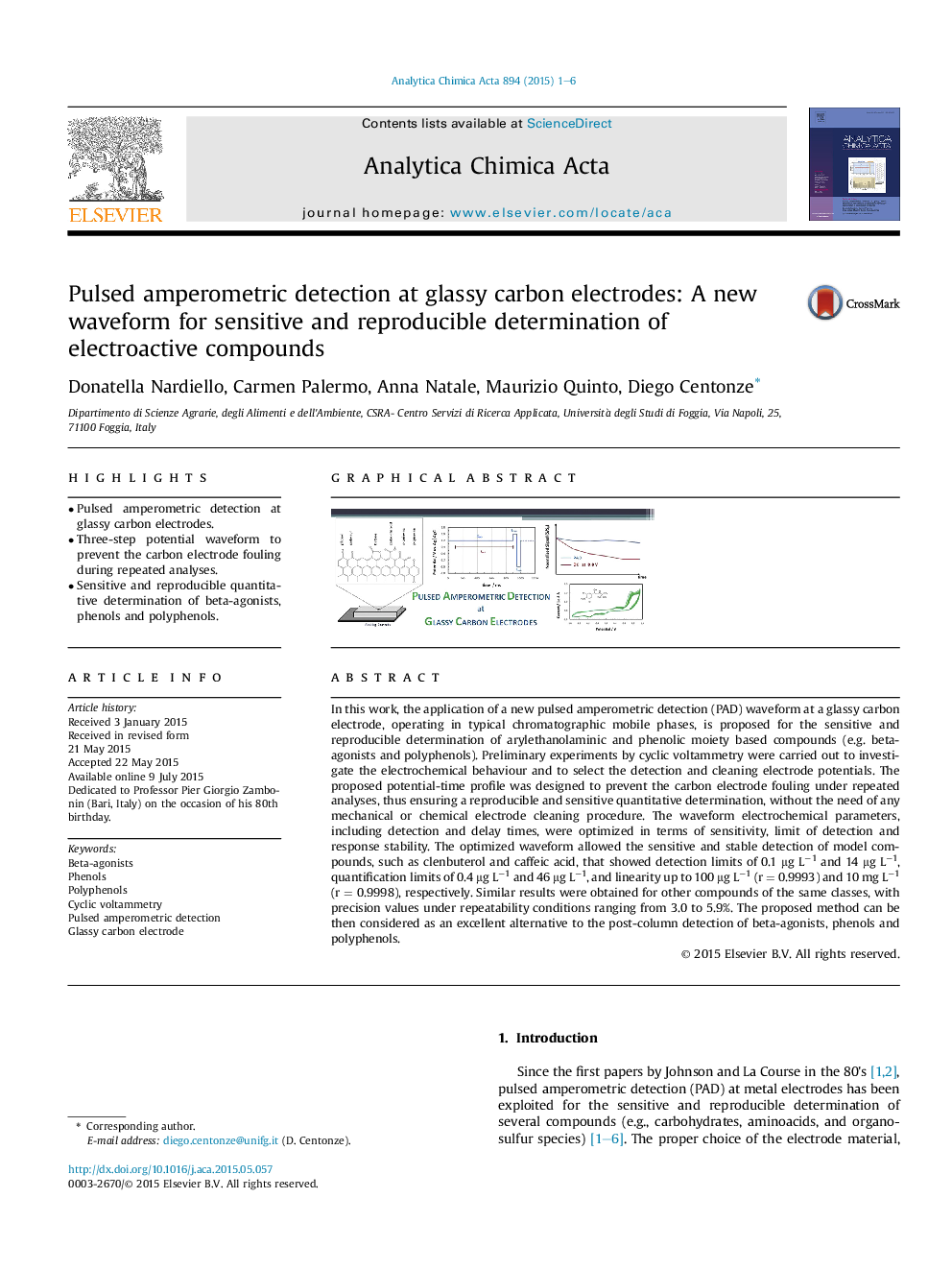| Article ID | Journal | Published Year | Pages | File Type |
|---|---|---|---|---|
| 1163315 | Analytica Chimica Acta | 2015 | 6 Pages |
•Pulsed amperometric detection at glassy carbon electrodes.•Three-step potential waveform to prevent the carbon electrode fouling during repeated analyses.•Sensitive and reproducible quantitative determination of beta-agonists, phenols and polyphenols.
In this work, the application of a new pulsed amperometric detection (PAD) waveform at a glassy carbon electrode, operating in typical chromatographic mobile phases, is proposed for the sensitive and reproducible determination of arylethanolaminic and phenolic moiety based compounds (e.g. beta-agonists and polyphenols). Preliminary experiments by cyclic voltammetry were carried out to investigate the electrochemical behaviour and to select the detection and cleaning electrode potentials. The proposed potential-time profile was designed to prevent the carbon electrode fouling under repeated analyses, thus ensuring a reproducible and sensitive quantitative determination, without the need of any mechanical or chemical electrode cleaning procedure. The waveform electrochemical parameters, including detection and delay times, were optimized in terms of sensitivity, limit of detection and response stability. The optimized waveform allowed the sensitive and stable detection of model compounds, such as clenbuterol and caffeic acid, that showed detection limits of 0.1 μg L−1 and 14 μg L−1, quantification limits of 0.4 μg L−1 and 46 μg L−1, and linearity up to 100 μg L−1 (r = 0.9993) and 10 mg L−1 (r = 0.9998), respectively. Similar results were obtained for other compounds of the same classes, with precision values under repeatability conditions ranging from 3.0 to 5.9%. The proposed method can be then considered as an excellent alternative to the post-column detection of beta-agonists, phenols and polyphenols.
Graphical abstractFigure optionsDownload full-size imageDownload as PowerPoint slide
